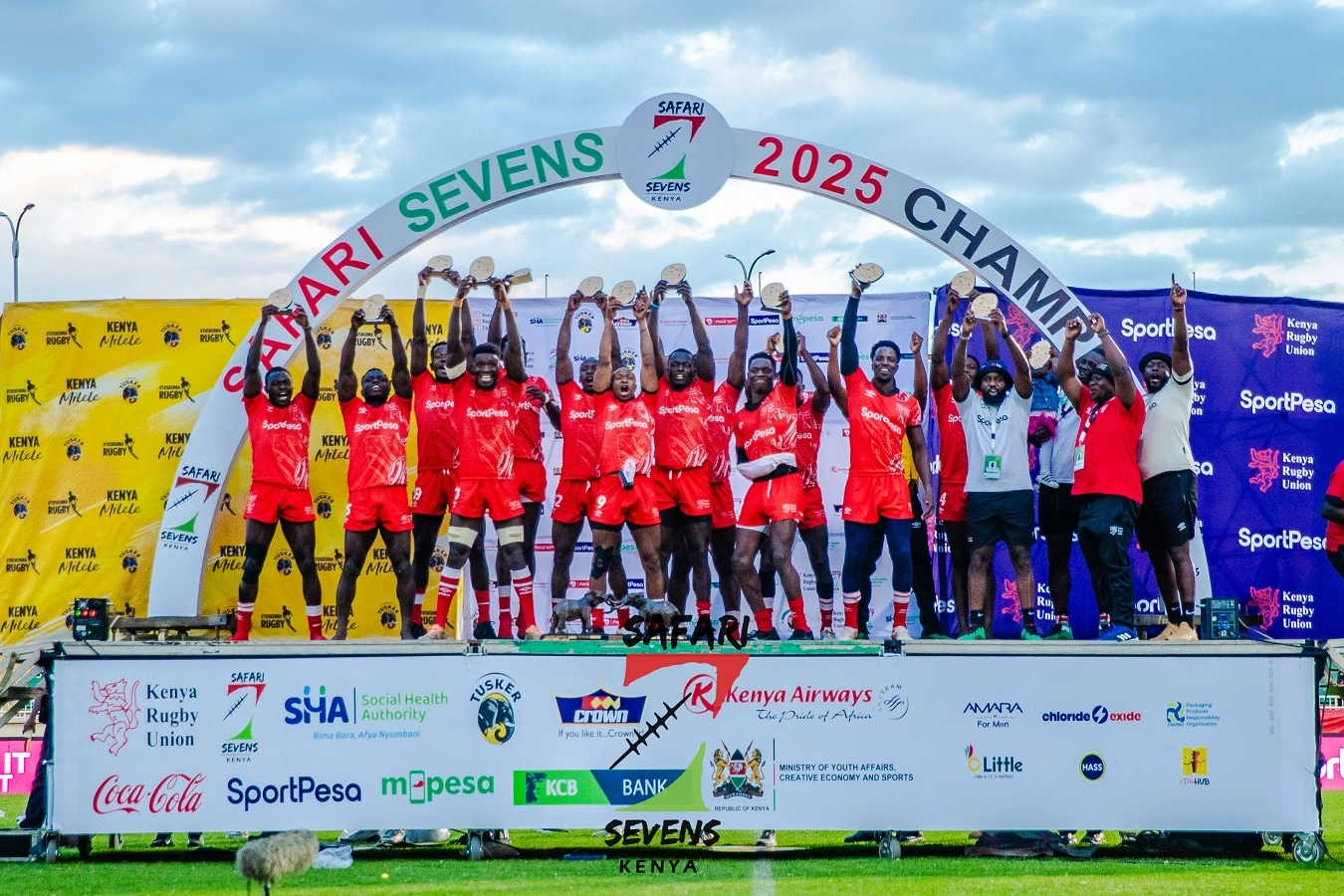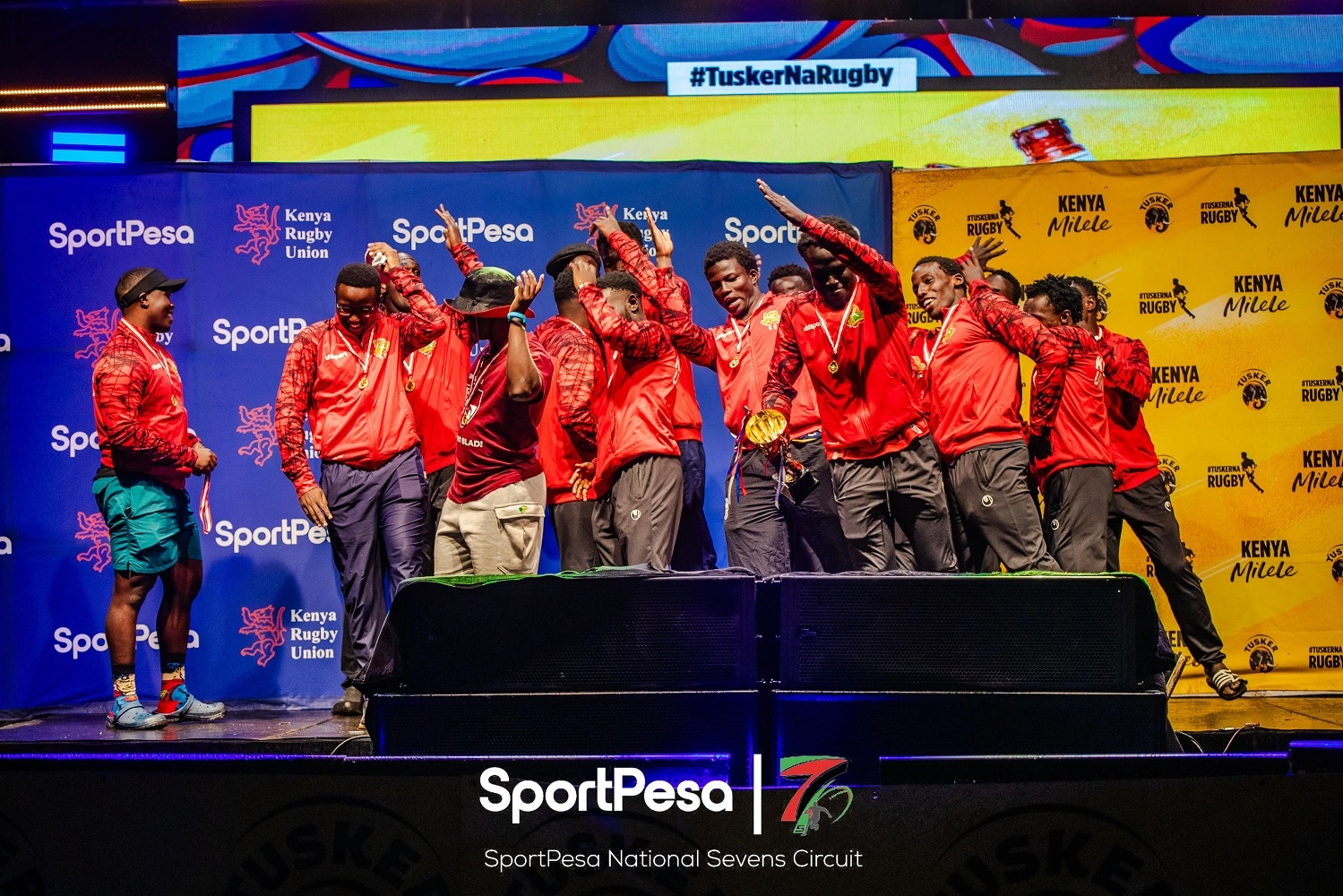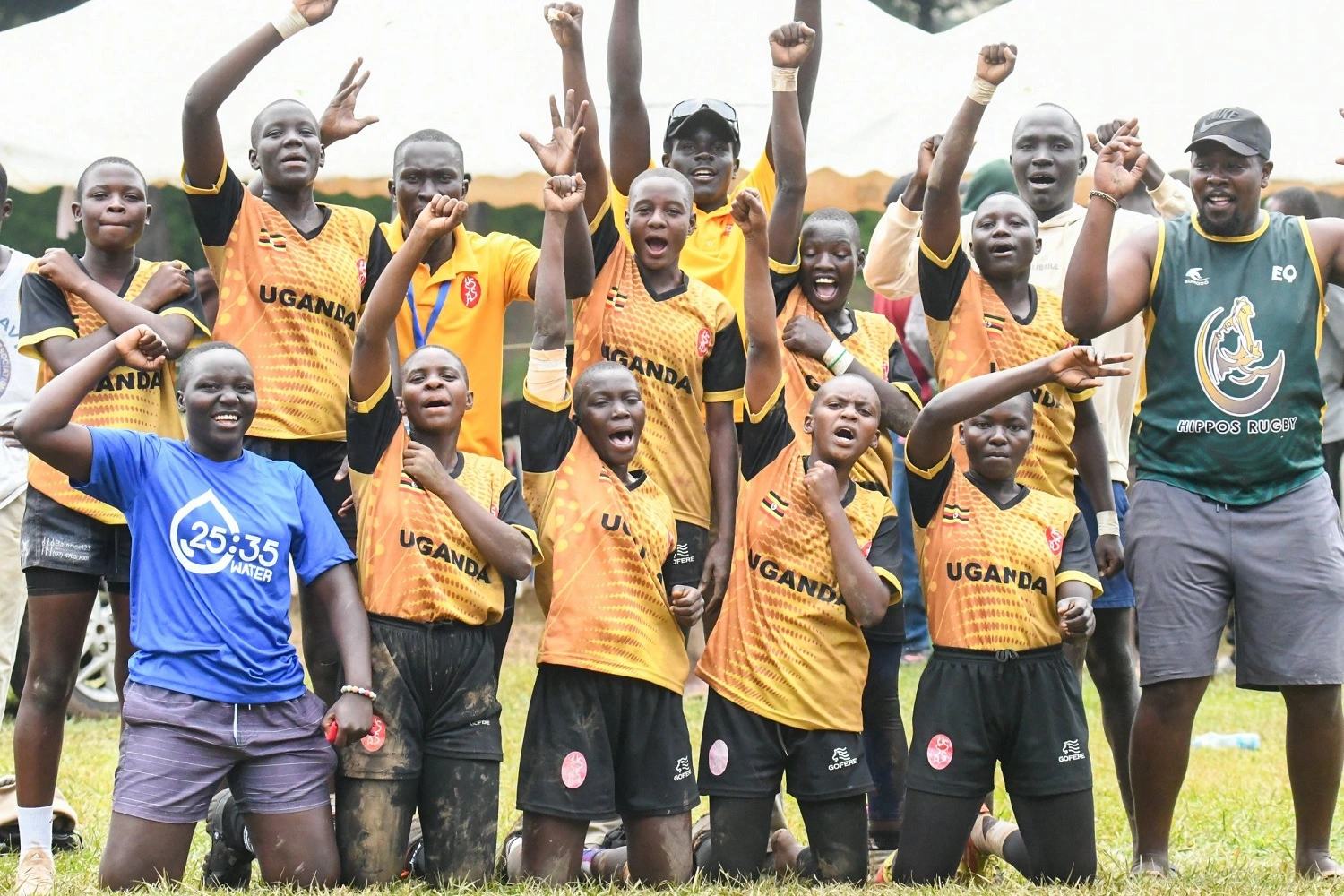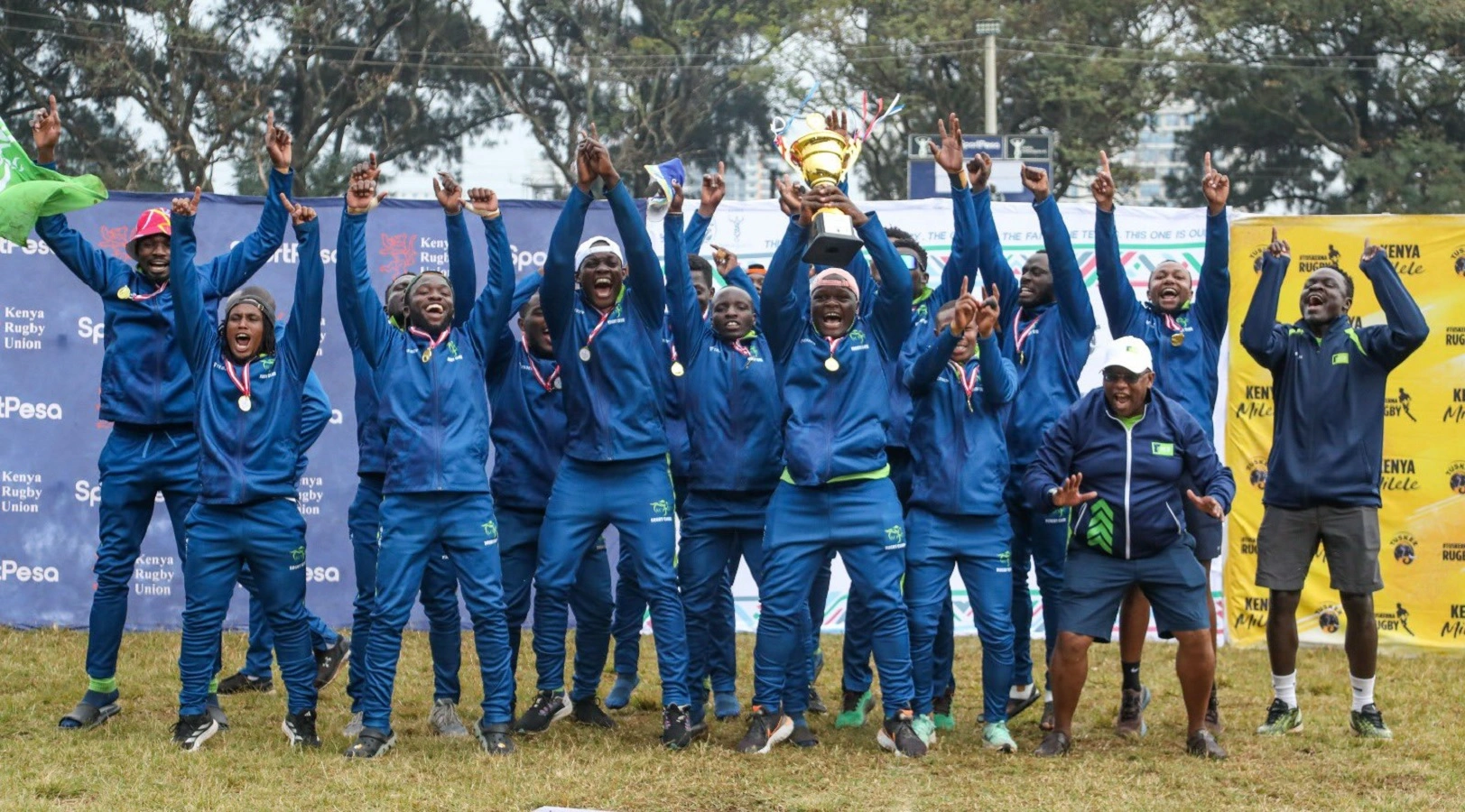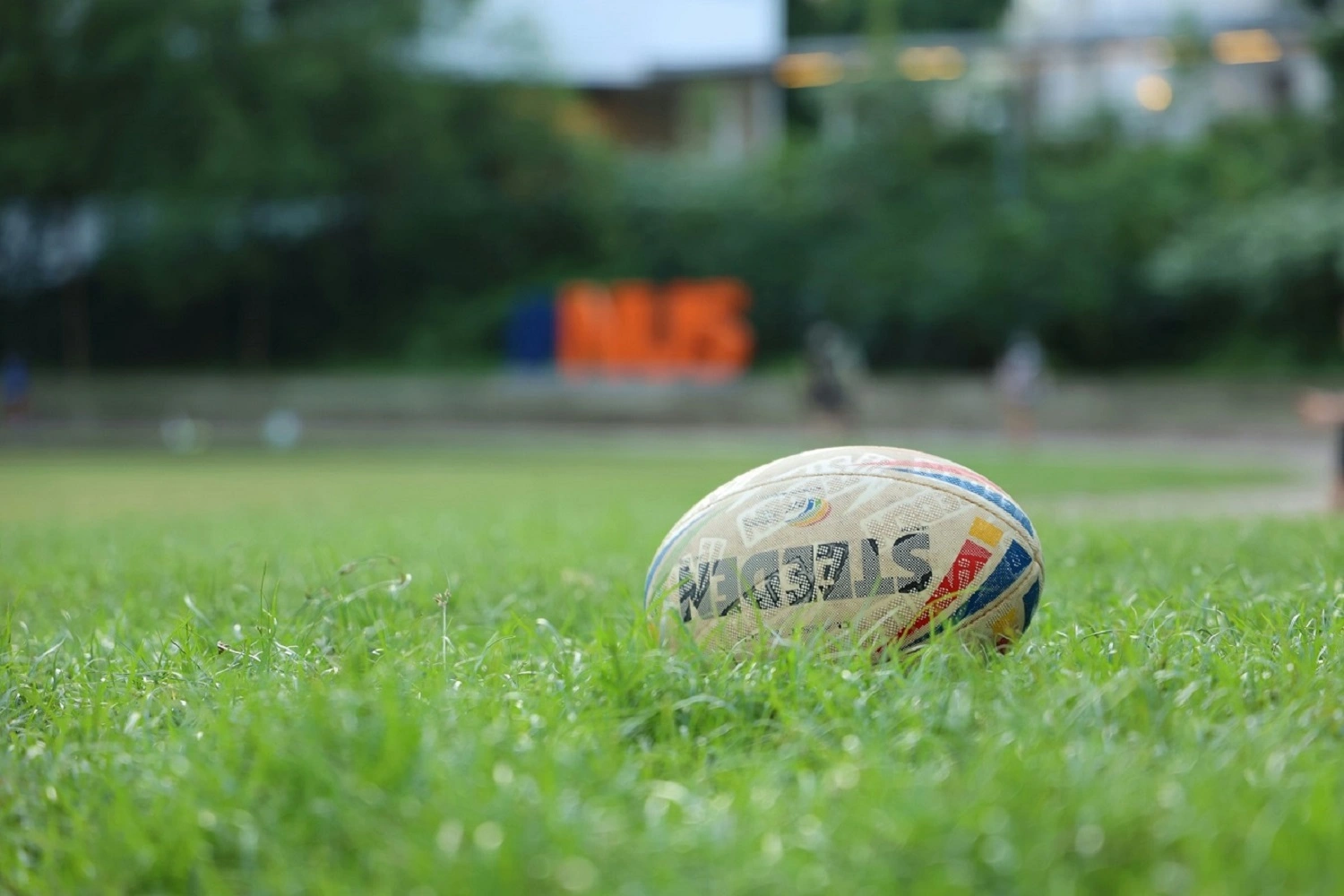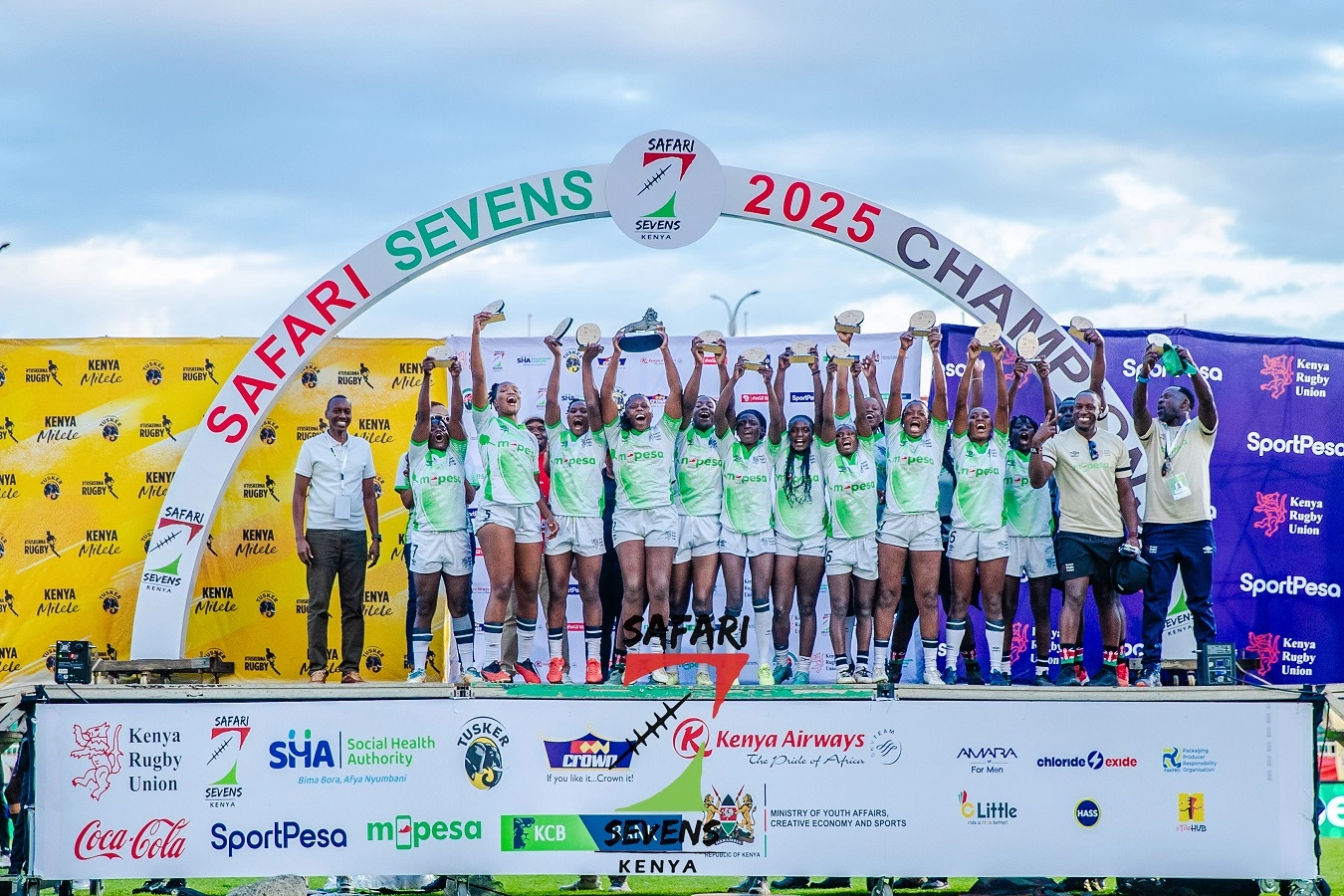
Analyzing the Lionesses’ Drift Defence and Wide Attacking Plan That Toppled Uganda at Safari Sevens
The Kenya Lionesses emerged victorious in the 27th edition of the Safari Sevens against the backdrop of sheer hard work and gritty performance. It was a sweet comeback after falling to Costa Blanca in last year’s gold medal match, underscoring the strides they have made in becoming a competitive squad with a clear game plan.
So, how did the Lionesses win the Safari Sevens?
The Lionesses comfortably beat Mwamba Select 25-5 in the quarter-finals before edging Shogun in the quarter-finals and Uganda in the decider in two tense matches in which both were tied for tries scored. Still, both Shogun and Uganda could not convert their tries.
Two tries apiece were scored in the semis and final, with the Lionesses converting one against Shogun for a 12-10 win and Sinaida Mokaya’s 100% accuracy with the boot in the final securing a 14-10 win over Uganda.
Kenya Lionesses Drift Defence
The old cliché says that attack wins games, but defence wins titles. The Lionesses’ defence was impervious and espoused grit and sheer hard work. The Lionesses employ a drift defence with a sweeper to cover the backfield and a catch-up defender to scramble whenever the first line is breached.
Midway through the first half in the final, Uganda set up a scrum in the middle of the field just in front of the Lionesses’ 22-metre line. The Ugandans swung the ball left and isolated the last defender in the Lionesses’ defence line, creating space for their winger out wide.
However, Edith Nariaka played the catch-up defender role from her position at scrum half, cross-covering the distance to make a powerful tackle and force an error that prevented a certain try.
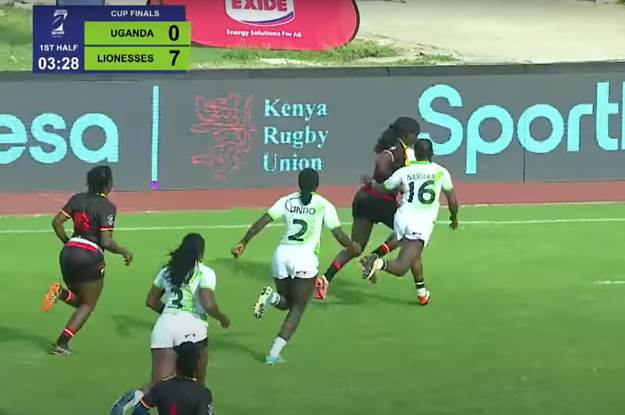
Nariaka in defence
The catch-up defence was again displayed when Uganda attacked from a scrum in the second half. In the Lionesses' red zone, a Lady Cranes hard runner broke the first line, with the ball carrier offloading to a support player in open space. The Lionesses scrambled well to stop another imminent try and forced an error.
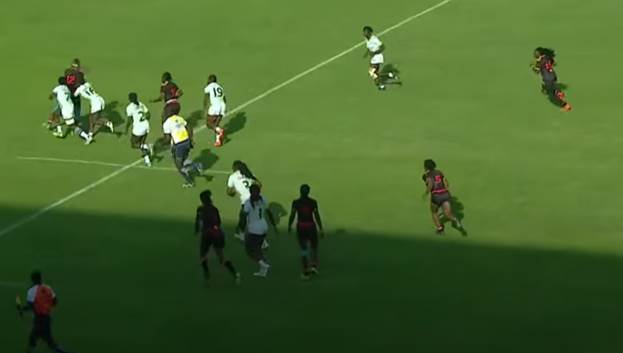
Kenya Lionesses Scrambled Defence Halts Lady Cranes' Attack
System Flaws
The drift defence leaves a lot of space on the outside, and players have to work incredibly hard while remaining connected. However, mistakes and miscommunications often happen in such a system.
In the first try conceded in the final, Sheila Chajira drifted early and left space for the attacker to exploit. The catch-up defender closed in on the ball carrier, but a pop pass back in was too much for the Lionesses to handle.
The second try conceded in the final also occurred out wide, where the drift defence could not cover in time. However, these scores are a testament to the quality of the Lady Cranes’ attack. The Lionesses maintained the shape and the high work rate late in the second half, even after being reduced to six players with Freshia Oduor in the sin bin.
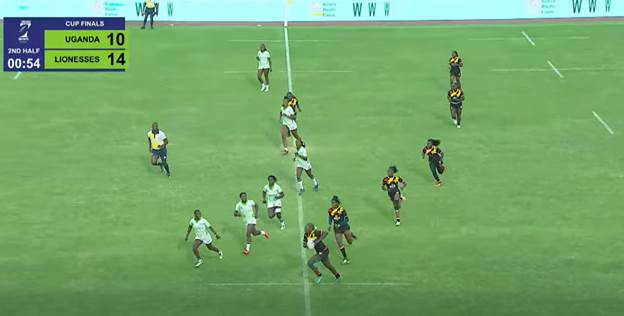
Lionesses Drift Defence After the Sin Bin
Lionesses Defensive Stats
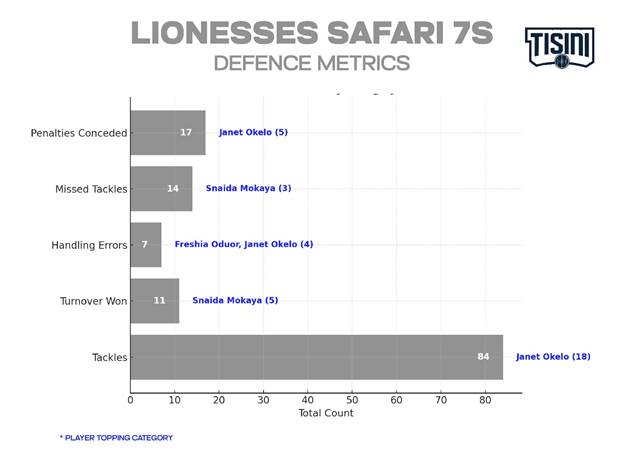
Hardworking Expansive Attack
The Lionesses had a high work rate in attack, where they were expansive and looked to shift the ball through the hands. The first try worked by swinging the ball to the edge from a scrum, with Oduor gaining good yards into the Ugandan 22.
This stretched the defence line, and Nariaka, who had an influential game, darted through to score in the subsequent phase.
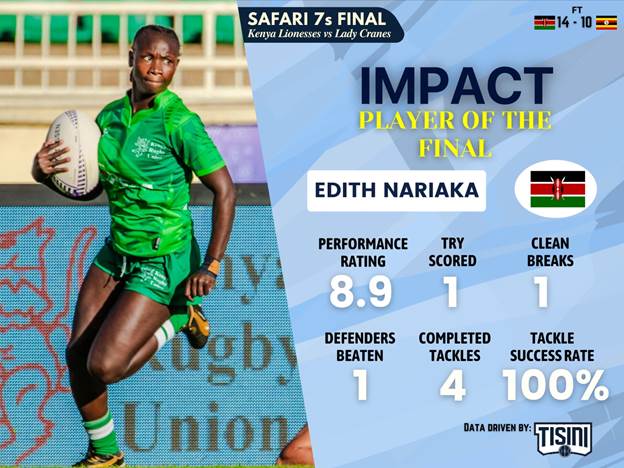
Nariaka Was Named Tisini’s Impact Player of the Final
The second try underscores the high work rate, where the Lionesses chased a kick downfield and contested the breakdown. From the ensuing penalty, Janet Okello tapped and strolled in from 5 metres out for a simple score, whose bulk of the work was in the chase and breakdown contest.
Perhaps the best example of the expansive game plan is the Lionesses’ first try in the semi-finals, where they passed the ball from edge to edge deep in their 22, stretching the defence and exploiting the space in the second phase of attack for Oduor to run the distance for a try.
They also utilised the kick-chase on numerous occasions, backing their high work rate to shut out any counterattack, pin opponents in their territory, and force turnovers.
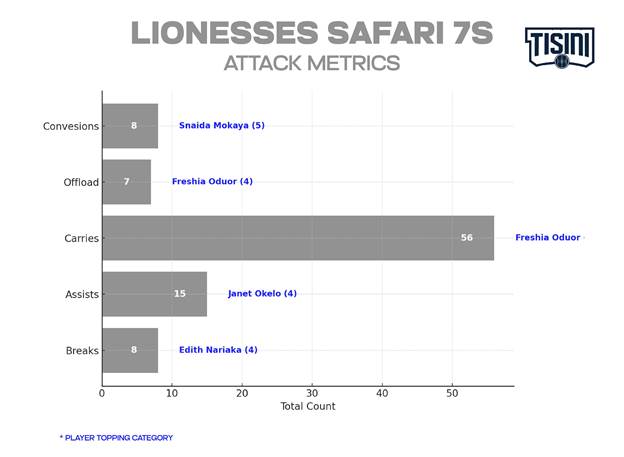
However, the wide attack often isolates ball carriers, and the Lionesses were guilty of turning the ball over on numerous occasions. The game was also marred by errors and inaccuracies in executions, halting attacking opportunities and putting the team under pressure.
For example, Nariaka showed some urgency and effort to rush to the centre line after a restart error from Shogun, but she tapped the ball wide off the mark, giving the defence time to reset and letting a prime attacking opportunity slip.
The effort and ambition of the Lionesses cannot be faulted. They have the game plan and the players to be a competitive side. Their style of play tests players’ skillsets to the limits, and the experience gained from the Safari Sevens will enable the coaches to iron out the deficits exposed as they prepare for the Rugby Africa Women’s 7s on 15th –16th November in Nairobi.
Feature Image Credit: Fanaka Studios

